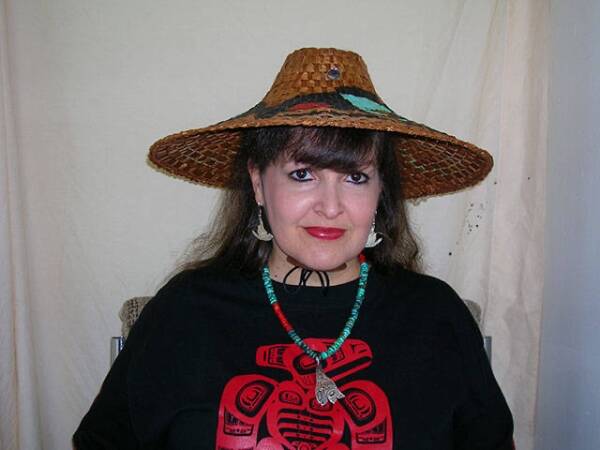November is Native American Heritage Month, and it is typically the month when we encounter critically endangered Southern Resident killer whales (SRKW) on their first fall visit to Vashon-Maury waters.
Throughout the Northwest Coast, several orca communities have harmoniously shared the traditional territories of Coastal Native peoples for millennia. To Indigenous peoples, killer whales are family and they are sacred.
As an Indigenous naturalist, I cherish the increasingly rare occasions I am privileged to commune with my SRKW relatives, whom I regard as a fellow First Nation. The SRKW do not forage for salmon in lower Puget Sound as often as they did decades ago. Every visit is precious, especially considering that this culturally and spiritually significant orca population faces extinction.
When all 25 J Pod members spent the night deep in Quartermaster Harbor from November 5 – 6, their unconventional behavior had nothing to do with foraging. Much of what non-Indigenous humans do not understand about SRKW has to do with the orcas’ highly evolved culture. Killer whales have ceremonies and rituals. They grieve their dead and celebrate births. Was J Pod commemorating a momentous event in SRKW history?
What I witnessed on Nov. 5 called to mind an extraordinary visit on November 3, 2015, when beloved matriarch Granny (J2) led J Pod and L Pod male Onyx (L87) into the outer harbor for roughly 30 minutes. The orcas did not appear to be foraging then, either. SRKW had avoided entering Quartermaster for decades, since the capture era of the mid-1960s to mid-1970s.
A violent capture occurred over several days in late October to early November 1965, when captors brutalized the SRKW with seal bombs, helicopters, and harpoons. They tried unsuccessfully to force the orcas into Quartermaster Harbor. They then pursued the pod south of the Tacoma Narrows, where an adult female was harpooned and trapped with her daughter in Henderson Bay. Dying in agony from her injuries, the mother ended her life by abruptly submerging with her blowhole open, drowning herself.
The young orphan was introduced to Namu — a Northern Resident male orca captured from British Columbia and dragged unwillingly to Puget Sound in a sea pen — as a potential companion. She was aggressive toward Namu and the man who harpooned her mother, so he sold her to SeaWorld in San Diego. She became the first “Shamu” of many who died prematurely in captivity.
Granny (J2), c. 1911–2016, no doubt vividly recalled the captures and how her relatives were mercilessly stolen or killed. Maybe she was closely related to the two tragic captives in 1965. In 2015, I speculated that she imparted her extensive wisdom to her podmates. Granny was ailing in the last year of her life. Perhaps she felt compelled to share crucial knowledge and memories of Quartermaster Harbor before she transitioned.
J Pod’s dignified solemnity in Quartermaster on Nov. 5 was in jarring contrast to the voyeurism of off-island hordes that flocked to Vashon from as far away as Portland, Mount Vernon, and San Juan Island to feed, what is for some, an apparent obsession.
Competitively posting hundreds of orca photos and videos online might validate a need for approval and admiration, but it is not the substantive action required to save the SRKW from extinction. Obsession is not equivalent to conservation.
Obsession is antithetical to Indigenous wisdom about nature and bonding with our non-human relations. The intrusive behavior of boaters, kayakers, and at least one paddle-boarder around J Pod in the harbor violated appropriate protocol for interacting with spiritual beings and endangered whales.
The carbon footprint from driving many miles and riding multiple ferries to get a “whale fix” is detrimental to orcas and salmon. Driving all over polluted lower Puget Sound in rainy fall and winter to glimpse or photograph critically endangered SRKW is unsustainable.
Runoff from cars and tires kills salmon and negatively impacts the sensitive nearshore environment. SRKW are exposed to toxins in car and boat exhaust when they surface to breathe. The green alternative is to watch orcas from the shoreline closest to where we live.
Orcas and Coastal Natives suffered from expansionist abuses. The extractive worldview of settler culture condoned wantonly destroying habitat and overharvesting salmon. Egregious harm occurred when a breeding generation of young SRKW was removed for whale jails – a blow from which the population will never heal.
These sacred orcas deserve better from us. SRKW have sacrificed horrendously in an inequitable relationship with non-Indigenous humanity. When will the self-proclaimed “orca lovers” make a meaningful sacrifice to support Southern Resident orca recovery?
Orca Annie Stateler is an Indigenous marine naturalist, educator, researcher, stranding responder, and founder of the Vashon Hydrophone Project.



